Mayo’s Clinic: Note Taking on Site Visits and Field Trips
 Providing lists of questions to ask or items to look for, and even suggesting index cards in lieu of large notebooks, can help your students take more-effective notes.
Providing lists of questions to ask or items to look for, and even suggesting index cards in lieu of large notebooks, can help your students take more-effective notes.
By Dr. Fred Mayo, CHE, CHT
Last month, we discussed the four types of field trips; this month, we will share some tips on helping students take notes on field trips and site visits.
Purpose of Note Taking
Among the many values of site visits and field trips is the opportunity to observe the operation of a kitchen, foodservice outlet, warehouse, dining room, restaurant, hotel or other hospitality operation. Determining what to observe, however, can be a real challenge for students. Therefore, we need to help them prepare for site visits and point out what they might need to notice and record in their notes.

 Not only will your students enjoy this assignment, but this will probably be one of the few times in your class that they can create unique dishes.
Not only will your students enjoy this assignment, but this will probably be one of the few times in your class that they can create unique dishes.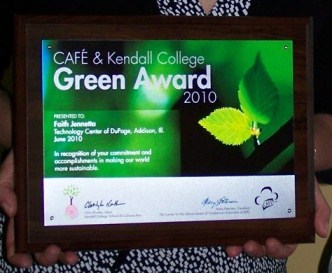 Sharing your best ideas for innovation in teaching sustainability can be rewarding.
Sharing your best ideas for innovation in teaching sustainability can be rewarding.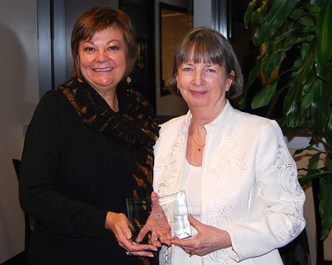 Students dazzled editors representing some of the food industry’s most prominent publications at the 2011 Chefs of Tomorrow™ media dinner held at The International Culinary School at The Art Institute of Washington in Arlington, Va., on November 9 during the International Foodservice Editorial Council (IFEC) Conference.
Students dazzled editors representing some of the food industry’s most prominent publications at the 2011 Chefs of Tomorrow™ media dinner held at The International Culinary School at The Art Institute of Washington in Arlington, Va., on November 9 during the International Foodservice Editorial Council (IFEC) Conference. The Culinary Institute of America has announced the creation of the role of provost at the CIA. As the senior academic administrator of the college, the provost is vested with oversight of education, research, accreditation, continuing education and food and beverage operations at all CIA campuses. The provost will report to Dr. Tim Ryan, president of the CIA.
The Culinary Institute of America has announced the creation of the role of provost at the CIA. As the senior academic administrator of the college, the provost is vested with oversight of education, research, accreditation, continuing education and food and beverage operations at all CIA campuses. The provost will report to Dr. Tim Ryan, president of the CIA.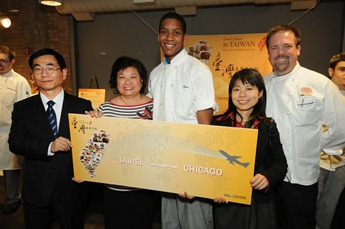 Kendall College School of Culinary Arts student Tayler Moore, a 20-year old sophomore pursuing his bachelor’s degree in culinary arts, won an all-expenses-paid weeklong trip to experience the foods and flavors of Taiwan in the first cookoff of its kind at Kendall College on Dec. 12. The competition, hosted by the Taipei Economic and Cultural Office (TECO) in Chicago, highlighted the official launch of Taiwan’s Government Information Office’s multilingual Web site (
Kendall College School of Culinary Arts student Tayler Moore, a 20-year old sophomore pursuing his bachelor’s degree in culinary arts, won an all-expenses-paid weeklong trip to experience the foods and flavors of Taiwan in the first cookoff of its kind at Kendall College on Dec. 12. The competition, hosted by the Taipei Economic and Cultural Office (TECO) in Chicago, highlighted the official launch of Taiwan’s Government Information Office’s multilingual Web site ( The National Restaurant Association Educational Foundation (NRAEF) proudly announced last autumn that NRAEF ProStart alumna Jazmin Eck was awarded a full scholarship to California Culinary Academy in San Francisco, where she planned to begin her education in September. Eck was chosen for the scholarship while attending the 25th Annual NRAEF Salute to Excellence awards held on May 21, 2011, in Chicago.
The National Restaurant Association Educational Foundation (NRAEF) proudly announced last autumn that NRAEF ProStart alumna Jazmin Eck was awarded a full scholarship to California Culinary Academy in San Francisco, where she planned to begin her education in September. Eck was chosen for the scholarship while attending the 25th Annual NRAEF Salute to Excellence awards held on May 21, 2011, in Chicago.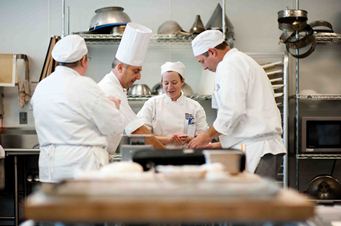 High-school students seeking assistance with the rising cost of culinary school are in luck. The American Academy of Chefs (AAC), the honor society of the American Culinary Federation (ACF), the nation’s largest professional chefs organization, and The Chefs Academy (TCA), an ACFEF-accredited program in Indianapolis, are pleased to announce four new scholarships available for students accepted to TCA, totaling $5,000 over four years.
High-school students seeking assistance with the rising cost of culinary school are in luck. The American Academy of Chefs (AAC), the honor society of the American Culinary Federation (ACF), the nation’s largest professional chefs organization, and The Chefs Academy (TCA), an ACFEF-accredited program in Indianapolis, are pleased to announce four new scholarships available for students accepted to TCA, totaling $5,000 over four years.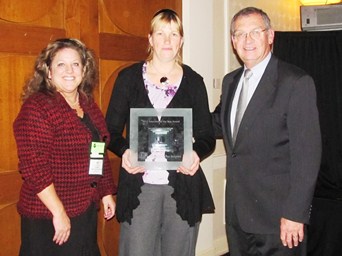 Women Chefs & Restaurateurs’ 2011 Educator of the Year acknowledges that any chef can serve virtually anything any time of year. But what have we sacrificed? Today’s culinary student is caught in the middle.
Women Chefs & Restaurateurs’ 2011 Educator of the Year acknowledges that any chef can serve virtually anything any time of year. But what have we sacrificed? Today’s culinary student is caught in the middle.